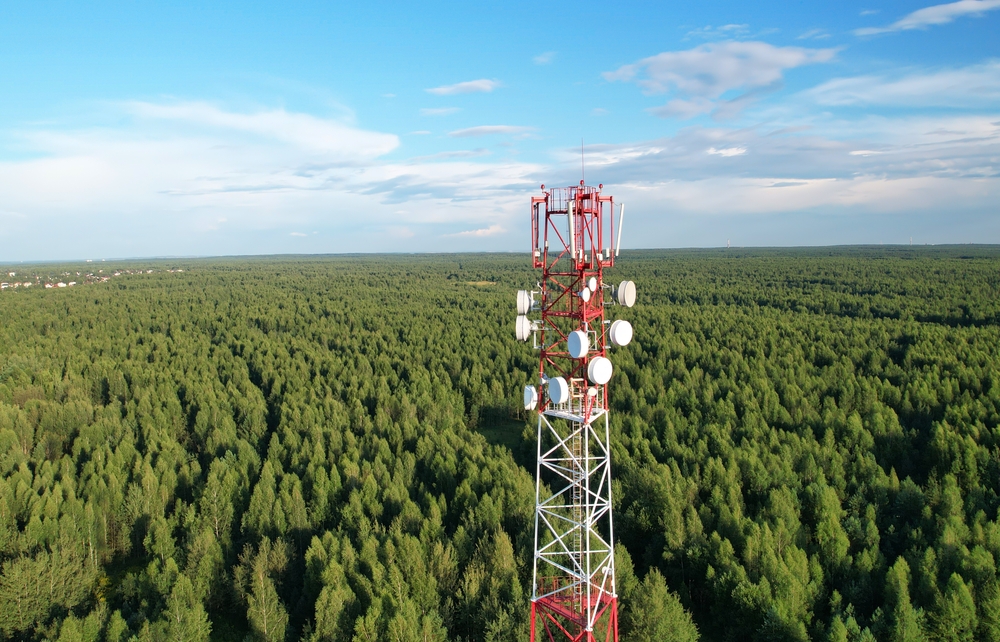Could your local trees be silently suffering from the invisible waves surrounding us? Recent research from Germany has shed light on a potential environmental concern that has long been overlooked: the impact of radiofrequency electromagnetic fields (RF-EMFs) from cell phone towers on trees. While most discussions around mobile technology center on human health, few have stopped to consider the effects these emissions might have on the natural world that surrounds us.
This long-term observational study is among the first to systematically examine how consistent exposure to electromagnetic radiation affects living trees. The results are hard to ignore. Trees growing near mobile phone base stations—especially those within direct sight of antennas—show alarming patterns of damage, often starting on the side facing the tower. As mobile infrastructure continues to expand, these findings raise urgent questions about the price our ecosystems might be paying.

A Decade-Long Study Raises Concerns
Between 2006 and 2015, researchers monitored tree health across two German cities—Bamberg and Hallstadt—where mobile phone towers had been installed. Their investigation spanned nearly a decade, offering rare insight into the long-term effects of RF-EMF exposure. Using 144 strategic measurement points, the team mapped radiation levels across the urban landscape, identifying patterns of tree damage in relation to proximity and orientation to mobile towers.
They selected a total of 120 trees for detailed analysis. This included 60 visibly damaged trees, 30 randomly chosen specimens, and 30 in low-radiation areas with little to no visible contact with masts. What they found was a consistent and troubling pattern: trees exposed to higher levels of radiation exhibited significant, often unilateral damage, particularly on the side facing the tower. This wasn’t random; it followed the map of electromagnetic exposure with disturbing accuracy.
Even more compelling was the condition of the trees in low-radiation areas. These trees, untouched by strong electromagnetic fields, showed no such damage. The difference between the exposed and unexposed trees highlighted a clear correlation. While it’s easy to blame pests, pollution, or drought, the researchers took care to rule out these factors. The selective, directional nature of the damage suggests RF-EMFs are a likely culprit.
How RF Radiation Affects Trees
Trees, by nature, are passive observers of their environments. They cannot relocate, take shelter, or adapt quickly to new external threats. This makes them uniquely suited for studying environmental changes over time. Unlike animals or humans, trees continuously face the same exposure levels and orientations, making the patterns of damage easier to track and verify. In this study, damage often began on the side of the tree facing a nearby mast and gradually spread across the entire plant.
Researchers documented symptoms such as cracking bark, discolored and prematurely falling leaves, and thinning crowns. Many trees experienced stunted growth and dead or dying branches, most often concentrated on the side directly facing the tower. These changes were not only visible but measurable—corresponding with areas of higher power flux density as mapped through field readings.
Interestingly, when similar tree species were compared across areas of varying radiation, those in low-EMF zones remained healthy. These observations suggest that it’s not simply species susceptibility but environmental exposure that determines tree health outcomes. This raises the concern that ongoing expansion of mobile infrastructure could silently alter our urban and suburban tree populations in ways we’re only beginning to understand.

Why This Matters for More Than Just Trees
At first glance, tree damage might seem like a localized issue—one best left to arborists or city landscapers. But trees are foundational to our ecosystems. They clean the air, support wildlife, regulate temperature, and offer countless health and aesthetic benefits to humans. When trees falter, the ripple effects are wide-reaching.
Urban areas are especially vulnerable. Trees provide essential shade and cooling in cities, where concrete and asphalt amplify heat. Damaged trees are less effective at moderating temperatures and may even die prematurely, leading to further ecological imbalance. As researchers note, the gradual and one-sided nature of the damage implies an ongoing environmental stressor—one that’s not being addressed in current urban planning or telecommunications policies.
The broader concern is whether RF radiation affects more than just trees. Plants, insects, and animals all rely on delicate biological systems. While this particular study focused on trees, it echoes findings in other research that suggests RF-EMFs may have subtle but significant effects on multiple forms of life. This invites a reevaluation of our standards for EMF exposure—guidelines that, until now, have mostly centered on short-term human safety.

Ignored Warnings and Continued Rollouts
Warnings about the ecological effects of EMF radiation are not new. As early as the mid-2000s, scientists such as Alfonso Balmori and Cornelia Waldmann-Selsam raised the alarm. Their field observations, often dismissed at the time, have now been reinforced with more systematic data. Despite this, the global rollout of mobile phone masts has only accelerated—with little regulation or environmental oversight.
Telecommunication advancements have understandably been prioritized for economic and social reasons. But the rush to expand coverage has meant that potential environmental consequences are often sidelined. Very few cities require environmental reviews before approving new tower installations. And fewer still monitor the long-term effects of these structures on nearby flora and fauna.
This study from Bamberg and Hallstadt stands out for its thoroughness. It not only documents visible symptoms in trees but matches them with measurable radiation levels—painting a compelling picture of correlation that can no longer be ignored. These findings could serve as a wake-up call for regulators, urging them to consider ecological health alongside technological progress.
Practical Signs of EMF-Linked Tree Damage
If you’re concerned about trees in your area, there are specific signs that could suggest electromagnetic stress. Look for one-sided damage—such as thinning crowns or yellowing leaves on the side of the tree facing a nearby mast. Unlike damage from pests or poor soil, which typically affect the whole plant, RF radiation appears to target specific zones exposed directly to its waves.
Bark that is cracking or peeling, especially on one side, is another indicator. In more severe cases, entire branches may die off while the rest of the tree appears healthy. Trees that are in the direct line-of-sight of a phone tower and exhibit these symptoms warrant closer observation. Meanwhile, those shielded by buildings or dense foliage often fare better, lending credence to the shielding effect against radiation.
While these signs are not definitive proof, they offer a practical checklist for citizens and environmental groups. Paired with community-led RF radiation mapping efforts, it becomes possible to identify at-risk areas and advocate for better safeguards. The health of our green spaces might just depend on this kind of local vigilance.
Tips to Protect Green Spaces and Raise Awareness
- Observe and Document: Start by observing trees near mobile towers for asymmetrical or progressive damage. Taking regular photos over time can reveal subtle patterns that may not be noticeable immediately.
- Encourage EMF Mapping: Municipalities or citizen science groups can use handheld meters to measure RF levels in public areas. Mapping these readings helps correlate environmental exposure with biological symptoms.
- Support Natural Shielding: Dense rows of trees, shrubs, or even physical barriers can block or dampen EMF exposure. Advocating for such buffer zones around schools, hospitals, and parks can help reduce risk.
- Call for Environmental Reviews: Urge local governments to include environmental assessments before approving new tower sites. These reviews should evaluate not only human health but also long-term ecological effects.
- Spread Awareness: Share credible research, like this German study, with local leaders, community groups, and garden clubs. Public awareness is the first step toward better regulation.
Looking Up: What Trees Are Trying to Tell Us
The silent suffering of trees near cell towers is a story unfolding in plain sight—yet going mostly unnoticed. This recent German study challenges us to pay attention. While the link between EMFs and tree damage may still be a topic of debate, the consistency and clarity of the findings suggest we can’t afford to look away.
Nature often signals distress long before humans feel the consequences. If trees are indeed the early warning system for a larger environmental disruption, ignoring their message could prove costly. Protecting our green spaces may require new thinking, stronger policies, and a collective effort to balance technological advancement with environmental integrity.













Leave a Reply